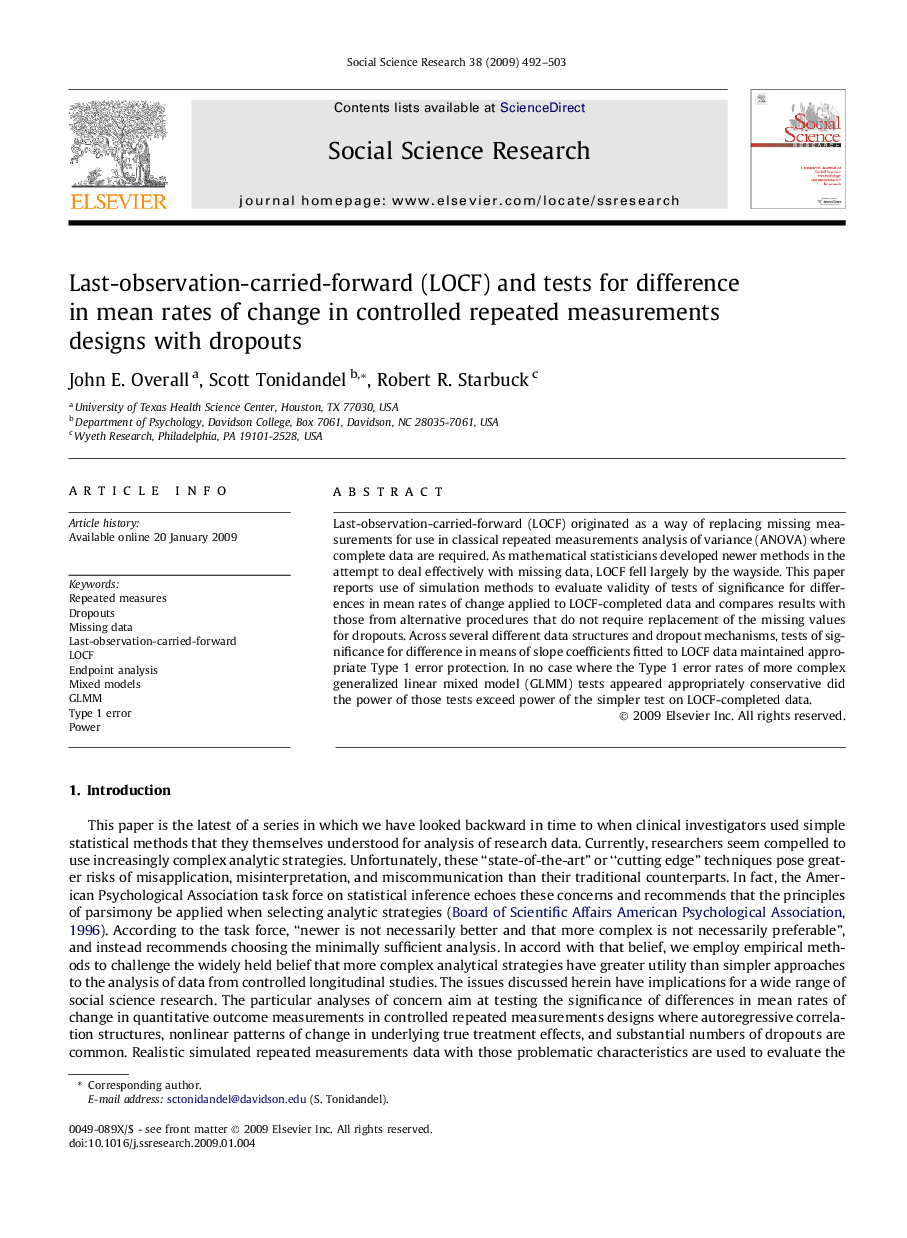| Article ID | Journal | Published Year | Pages | File Type |
|---|---|---|---|---|
| 956300 | Social Science Research | 2009 | 12 Pages |
Last-observation-carried-forward (LOCF) originated as a way of replacing missing measurements for use in classical repeated measurements analysis of variance (ANOVA) where complete data are required. As mathematical statisticians developed newer methods in the attempt to deal effectively with missing data, LOCF fell largely by the wayside. This paper reports use of simulation methods to evaluate validity of tests of significance for differences in mean rates of change applied to LOCF-completed data and compares results with those from alternative procedures that do not require replacement of the missing values for dropouts. Across several different data structures and dropout mechanisms, tests of significance for difference in means of slope coefficients fitted to LOCF data maintained appropriate Type 1 error protection. In no case where the Type 1 error rates of more complex generalized linear mixed model (GLMM) tests appeared appropriately conservative did the power of those tests exceed power of the simpler test on LOCF-completed data.
